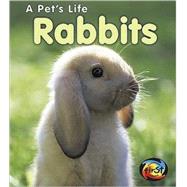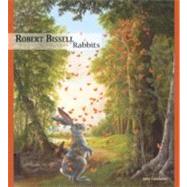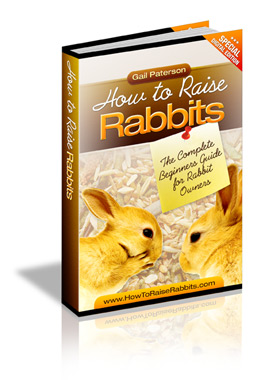Rabbit Breeds
There are forty seven specific rabbit breeds that the American Rabbit Breeders Association officially recognizes, among the breeds there are numerous variations, e.g coat and eye color giving you plenty of choices when deciding on a rabbit.
Whether you are considering
rabbits as pets
or rabbits for showing purposes you will need to decide on a breed, most rabbits are sociable and make good family pets, the amount of care that each individual breed requires is dependent on the breeds characteristics, e.g long haired Giant, dwarf.
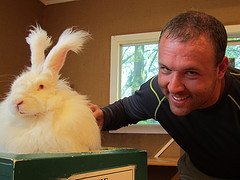
Determining the right breed for you will depend on your needs, space available, amount of time to dedicate to their care, and the reason you are keeping rabbits.
Fortunately the majority of rabbit breeds are relatively easy to care for, requiring only weekly grooming while others will need daily brushing to keep their fur from matting, the
Angora rabbit
requiring the most care of all.
Choosing Rabbit BreedsRabbit breeds that require regular attention are; Holland Lop, Hotot, Mini Lop.
these breeds require grooming regularly Weekly to bi-weekly, except during shedding season when bi-weekly to daily grooming may be needed. As these are all small rabbits they do not take long to groom.
Rabbit Breeds requiring the most grooming are;
American Fuzzy Lop, English Angora,French Angora, Giant Angora, Satin Angora.
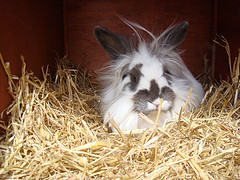
The above breeds will require daily grooming as their fur becomes entangled and even matted very easily, resulting in considerable discomfort for the animal.
These breeds should only be kept by dedicated people who have the time to take care of them properly, remember a rabbit will live for many years.
Choosing a rabbit as a petWhen choosing a breed of rabbit as a pet you must consider the amount of space you can afford to give your rabbit, positioning of the outdoor hutch, this is very important as direct sunlight is not good for rabbits it will cause them to overheat, rabbits will survive better through cooler conditions, but well out of drafts.
The outdoor hutch must be kept secure from predators, not just wild ones but the family cat or dog, or cats that may visit your garden. Being at the bottom of the food chain rabbits fall prey to many animals who will stop at nothing to gain their prize
An important consideration is the size of the rabbit breed, larger rabbit, larger hutch, larger appetite, goes without saying, dwarf and medium sized rabbits are easier for young children to handle.
The temperament of the particular breed must also be taken into account most breeds are sociable and very placid providing they have been socialized as kittens.
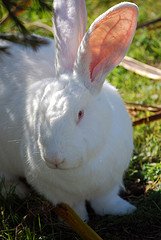
Dwarf Breeds Most popular American fuzzy lop, mini lop, dwarf hotot.
Small Breeds Most popular; Mini Rex, Dutch, Havana, Himalayan.
Medium Breeds Most popular; English Spot, Harlequin.
Large Breeds Most popular; American Chinchilla, New Zealand white.
Giant Breeds Most popular; Flemish Giant.
Competition Rabbits
As your interest in rabbits grows you may decide to get involved in showing your rabbit in the popular rabbit competitions. There are many categories which you may enter your rabbit in, many showmen prefer to specialize in one breed of rabbit and competition for prizes and pride are often quite fierce.
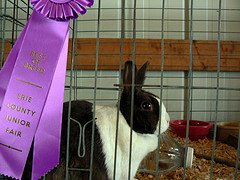
If you decide to get involved in showing competitions it is wise to consult with a Rabbit breed club or association, specific to the breed of rabbit that you are interested in.
There are numerous judging criteria which constitute a top specimen, which are specific to each breed and the best people to gain this information from are the associations. American or U.K The British Rabbit Council
Below is an extract of the criteria that is used to judge just one particular rabbit breed in this example a miniature Polish rabbit, this is not complete and only meant as an example.
Points are awarded by a judge, many of whom specialize in just one breed.
1. Type - The Polish is a miniature, fine-boned rabbit with a fly back coat, the essence of the Polish is all round balance. The exhibit should be narrow in shoulder, relative to other breeds, and much is made of the way in which the Polish is posed or stood.
Ideally in this position, when viewed from the side, the front legs, chest through the head and ears should form a vertical line and at the same time the back should arch in a quarter circle from the back of the neck to the tail, with the belly and chest well tucked up.
The head should be well rounded although not necessarily as bold in does. The ears should be carried erect and should be roughly the same length as the distance from the base of the ears to the nose although again the overall balance of the exhibit is the important factor. The Polish should weigh a maximum of 1.134kg (2.1/2lb)
2. Coat - The construction of the hair shaft to be short and fine to lie very close to the body. When coat is stroked in the reverse it should sharply fly back to its original position with a degree of density.
3. Color - Pure white with Red or Blue eyes, other as per the normal color depicted.
4. Ears - Set well together carried erect on top of the head, well covered and rounded when viewed from the front or side. To touch all the way up without showing a flange when presented. The length to be in keeping with the overall balance of the exhibit. The color to match the body where appropriate, otherwise to pattern.
5. Eyes - Bright and very bold, well positioned on upper side of head. The color in Red Eyed Whites to be as near blood red as possible and in Blue Eyed Whites to be as deep a blue as possible. Other colors as per the normal color of the exhibit depicted.
6. Condition - The exhibit should be in a perfect state of health and bodily condition free from all soiling. The coat should reflect the overall good health of the exhibit, which should appear alert, sprightly and vigorous.
FAULTS - Roll back coat, bowed ears or pale eyes.
White toenails on any exhibit other than Red Eyes Whites or Blue Eyed Whites.
Ears out of proportion with the body. DISQUALIFICATIONS - Exhibits over 1.134kg (2.1/2lb). Odd color, wall or specked eyes. White armpits, putty nose or white patches on a colored exhibit.
COLOURS
GROUP 1 - SELFS
White - As pure as possible, the eye color to be as near blood red or dark blue as possible
Black - A rich lustrous black with slate blue under color. A brown tinge to be regarded as a fault.
Blue - A clear bright blue (not lavender) from tip of fur to skin.
Brown - A rich dark chocolate, the color to go well down the fur with a pearl gray under color.
Lilac - A pinky dove gray throughout from tip of fur to skin. A bluish tinge to be regarded as a fault.
“The above excerpt is from The British Rabbit Council.”
Exhibiting rabbits is very interesting and many like me have traveled great distances to take part in rabbit shows, there is a lot of pride taken in the preparation of a rabbit for a show, and great prestige is gained from winning, knowing that your rabbit has been judged as the best out of perhaps a hundred or more rabbits in the competition.
Achieving this ensures future success, as your rabbit carries a specific gene, future generations will also be of good quality.
It is unlikely that you will find a world class winning rabbit in a pet shop as these are usually the rejects from breeders, which will make excellent pets, but unfortunately not champions.
To obtain a good specimen that will meet the judging criteria for that specific rabbit breed you will need to purchase a rabbit from a breeder and then he will not part with the best and may be very reluctant to sell you a rabbit at all. There is nothing worse than being beaten by one of your own rabbits that you sold to someone else such is the rivalry among showmen.`
Mini Encyclopedia of Rabbit Breeds and Care : A Color Directory of the Most Popular Breeds and Their Care
Return from rabbit breeds to free pet advice home
photo attribution used under creative commons licence
Biggles the Lion headfrom sarniebill1, dutch Best of breed from Benimoto, nz Rabbits n Stuff from picto:graphic, Angora Angora Rabbit and Mario from UCFFool
 Determining the right breed for you will depend on your needs, space available, amount of time to dedicate to their care, and the reason you are keeping rabbits.
Determining the right breed for you will depend on your needs, space available, amount of time to dedicate to their care, and the reason you are keeping rabbits.









